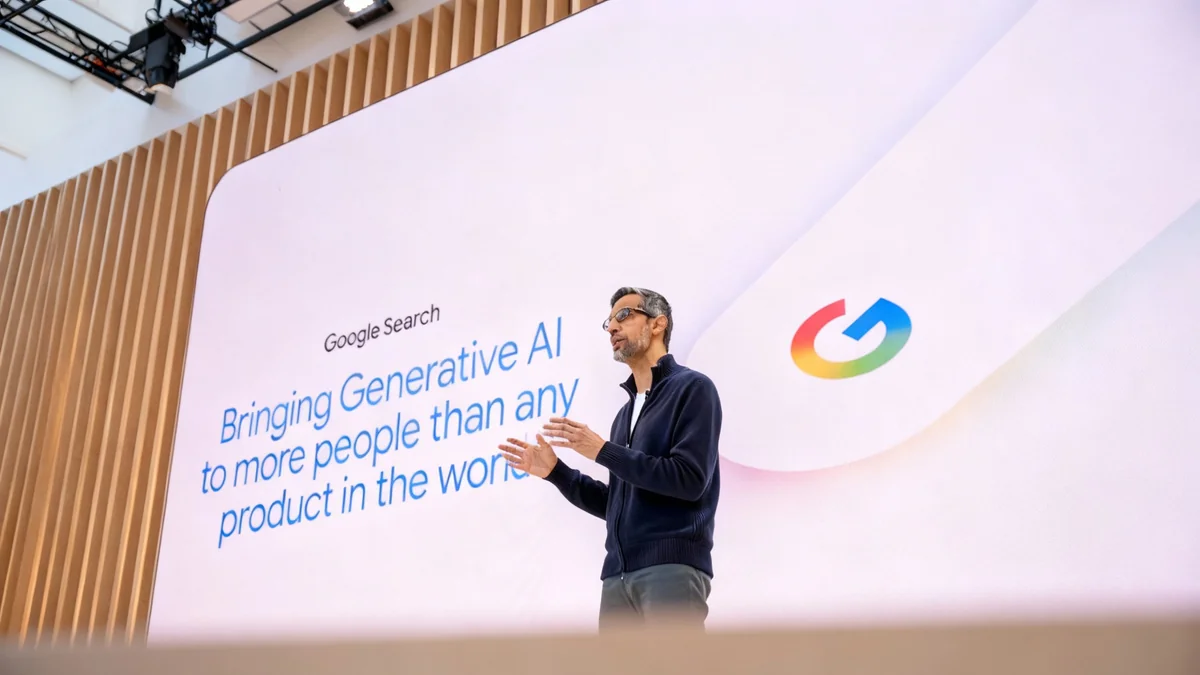A new report from Google's DevOps Research & Assessment (DORA) program reveals that artificial intelligence significantly boosts productivity in software development. The 2025 DORA report, based on a survey of 5,000 professionals and over 100 hours of interviews, highlights AI's growing influence. It shows a substantial increase in AI adoption among developers and a positive impact on overall output, marking a shift from previous findings.
Key Takeaways
- Between 90% and 95% of software developers now use AI for work.
- AI use has led to an 80% reported increase in programmer productivity.
- Effective AI integration relies on strong organizational systems, not just tools.
- Platform engineering and Value Stream Management are critical for maximizing AI benefits.
- AI acts as an amplifier, enhancing both strengths and weaknesses within organizations.
Widespread AI Adoption in Software Development
The 2025 DORA report indicates that AI is now a mainstream tool in enterprise software development. A significant majority of professionals, between 90% and 95%, depend on AI for their daily work. This represents a 14% increase in AI adoption compared to the previous year, highlighting its rapid integration into developer workflows.
Developers spend a median of two hours per day interacting with AI tools. While only 7% "always" use AI to solve problems, a larger group of 39% "sometimes" uses it. Notably, 60% of developers use AI "about half the time" or more when tackling tasks, showing its consistent presence in their routines.
AI Use Statistics
- 90-95% of developers use AI for work.
- This is a 14% jump from last year.
- Median AI interaction time: 2 hours per day.
- 60% use AI at least half the time for problem-solving.
Productivity Gains and Quality Concerns
The report provides encouraging data on productivity. Eighty percent of programmers reported an overall increase in their productivity due to AI. However, the impact on code quality is less clear. Only 59% of respondents stated that their code quality improved with AI assistance.
Trust in AI-generated code also varies. Seventy percent of respondents trust the quality of AI output, while 30% do not. This suggests that while AI can accelerate development, human oversight and validation remain essential for ensuring accuracy and reliability.
"The code that came out was almost never right on the first run. I had to spend a lot of time cajoling the AI to get it right. Even once the work was done, I went back to do a full QA sweep, where I found more errors."
This observation highlights that AI tools, while powerful, often require significant human intervention for correction and validation. Developers must still dedicate time to review, validate, and test AI-generated code, similar to how they would review code from human colleagues.
AI as an Organizational Amplifier
One of the most significant findings in the DORA report is that AI acts as an amplifier. This means AI magnifies the existing strengths of high-performing organizations and exacerbates the weaknesses of struggling ones. For example, a well-organized team with robust revision control practices can recover quickly from AI errors, such as accidental code deletions.
Conversely, a disorganized or haphazard team might experience significant setbacks when AI makes mistakes. The report stresses that successful AI adoption is primarily a "systems problem," not merely a "tools problem." The underlying organizational structure and processes largely determine AI's positive or negative impact.
Understanding the 'Amplifier Effect'
AI can accelerate processes, but it does not inherently fix foundational issues. If a team lacks clear guidelines or strong internal platforms, AI might introduce new complexities or amplify existing inefficiencies, leading to more chaos rather than improved outcomes.
Speed Versus Stability: A Debunked Myth
The DORA team identified eight factors that influence a team's performance, leading to the classification of seven team archetypes. A key insight from this analysis challenges the long-held belief that there is a trade-off between speed and stability in software development. The idea that teams must choose between fast delivery and high-quality code appears to be a myth.
The report shows that the top 30% of respondents, categorized as "harmonious high-achievers" or "pragmatic performers," excel at both. These teams produce output quickly and maintain high code quality. This suggests that with the right systems and practices, organizations can achieve both efficiency and reliability.
Key Practices for Effective AI Adoption
The report outlines seven key practices that drive AI's impact, either positively or negatively. Successful teams tend to implement more of these practices, while less successful ones, despite having productive individual programmers, often lack these fundamental elements. The DORA team recommends treating AI adoption as an organizational transformation.
Investing in foundational systems is crucial. These include internal platforms, robust data ecosystems, and core engineering disciplines. These elements are seen as prerequisites for converting AI's potential into measurable organizational performance.
Two Critical Factors for AI Success
- Platform Engineering: This practice involves building strong internal development platforms that centralize tools, automations, and shared services for development teams. The study indicates that 90% of developer organizations have adopted platform engineering. When internal platforms function well, developers spend less time on system issues and more time creating value. Strong platforms are a clear prerequisite for effective AI use; weak platforms limit AI's organizational productivity benefits.
- Value Stream Management (VSM): VSM involves mapping the entire workflow from idea to delivery. By visualizing every step, teams can identify bottlenecks, such as prolonged code reviews or stalled releases. The report states that AI's positive impact is "dramatically amplified" in organizations with strong VSM practices. VSM helps ensure AI is applied to the right problems, transforming localized productivity gains into significant organizational advantages rather than creating further downstream issues.
Shifting Trends in AI Productivity
Last year's DORA report indicated that AI reduced software development productivity. However, this year's findings show a reversal, with AI now enhancing productivity. The DORA researchers attribute this shift to two main factors:
- Increased Familiarity: Development organizations are more familiar with AI tools and have learned to use them more effectively.
- Platform Engineering Adoption: The widespread adoption of platform engineering has created better environments for AI integration.
These factors suggest that as organizations mature in their AI understanding and strengthen their underlying systems, the benefits of AI become more pronounced. The report concludes that AI has transitioned from a hyped concept to a mainstream enterprise tool. Real advantages come from building solid organizational systems, as AI reflects and magnifies existing operational effectiveness.





